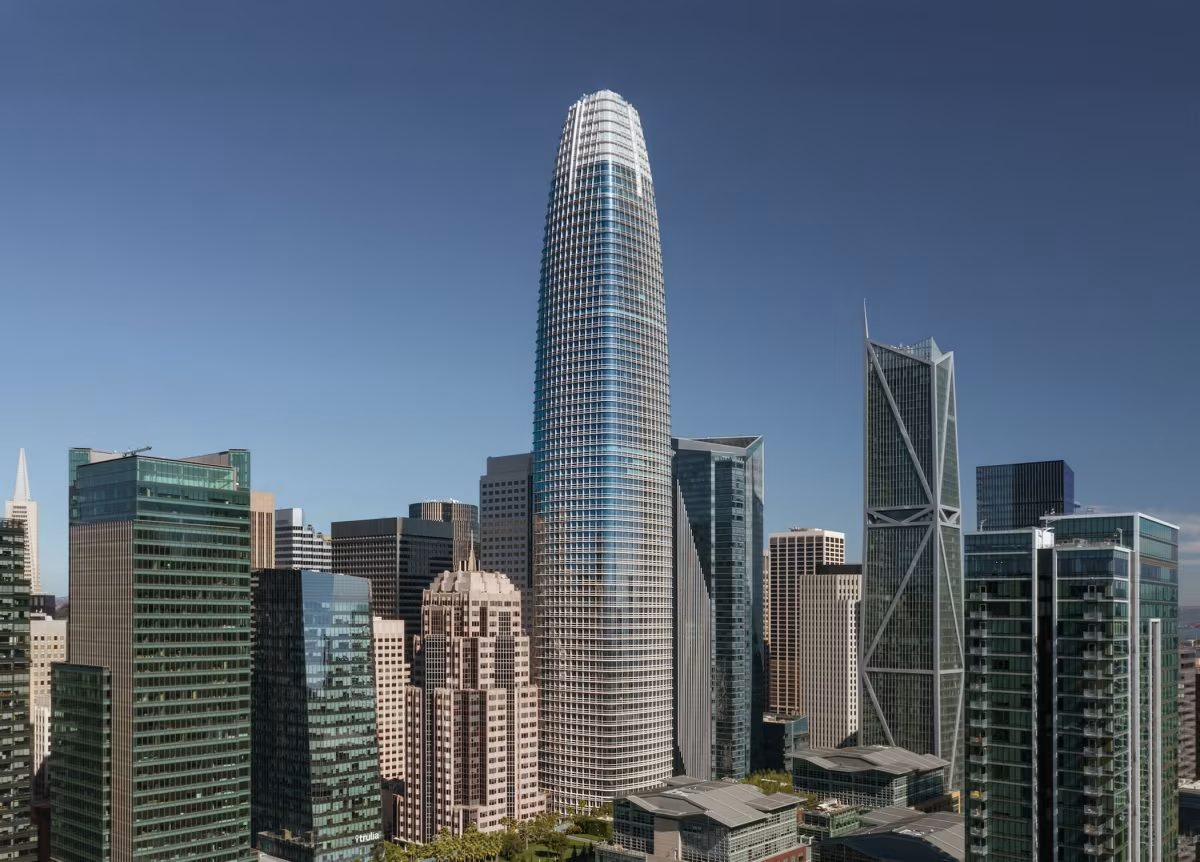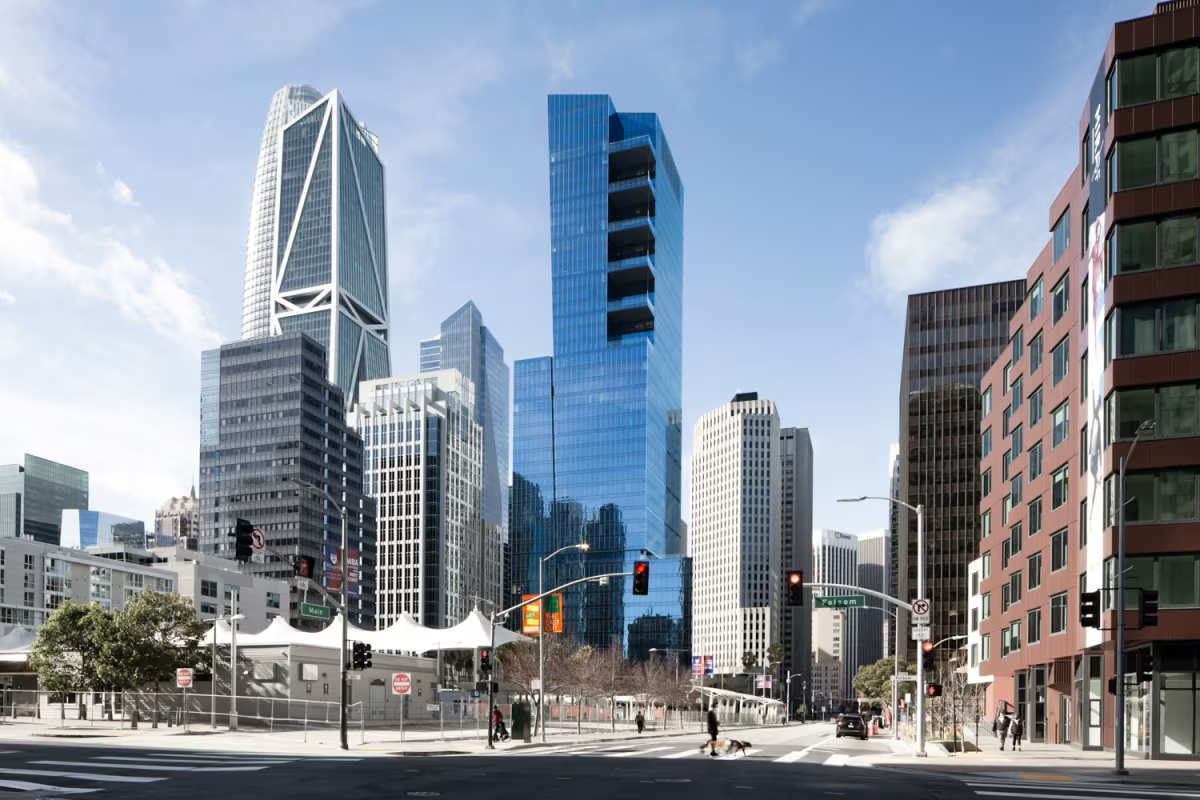Salesforce Tower vs Park Tower at Transbay


Comparing the Salesforce Tower and the Park Tower at Transbay is interesting because they both stand in San Francisco, CA, and were completed in the same year, but they were designed by different architects.
This offers a unique glimpse at how rival designers approached projects in the same city during the same era.
Height & Size
The Salesforce Tower is clearly the larger tower of the two, both in terms of height and number of floors. It rises to 1070ft (326m) with 61 floors above ground, while the Park Tower at Transbay reaches 604ft (184m) with 43 floors above ground.
Salesforce Tower also offers more total built-up area, a total fo 1,399,996 sqf (130,064m2), which is about 596,299 sqf (55,398m2) more than what the Park Tower at Transbay offers.
Of course, each project may have faced different briefs or regulatory constraints, which we don't really know about and could also explain the outcome.
Architectural Style
Both the Salesforce Tower and the Park Tower at Transbay were designed in line with the aesthetic conventions of the Contemporary style.
At the time, this style was at the height of its popularity. So both Pelli Clark & Partners and Goettsch Partners followed what was in many ways expected of them, producing designs that fit comfortably within contemporary architectural norms, rather than breaking with convention.
Uses
Both the Salesforce Tower and the Park Tower at Transbay were designed to serve as commercial towers, and that has remained their main use since their completion, serving similar roles in the urban fabric.
The Park Tower at Transbay also provides 117 parking spaces.
Structure & Facade
The two towers rely on different structural systems, reflecting distinct engineering strategies.
The Salesforce Tower uses a Framed Tube In Tube structural system, which combines a strong central core with a perimeter tube of columns, while the Park Tower at Transbay uses a Frame system, that relies on a regular grid of columns and beams to sustain its weight.
Yet, when it comes to their facade, they both employed the same solution, a Curtain Wall facade.
A curtain wall is a non-load-bearing facade hung from the structural frame. It is anchored to floor slabs and transfers only its own weight and wind loads, allowing for sleek, glassy exteriors.
| Salesforce Tower | Park Tower at Transbay | |
|---|---|---|
| Pelli Clark & Partners | Architect | Goettsch Partners |
| 2013 | Construction Started | 2015 |
| 2018 | Year Completed | 2018 |
| Contemporary | Architectural Style | Contemporary |
| Commercial | Current Use | Commercial |
| 61 | Floors Above Ground | 43 |
| 3 | Floors Below Ground | 2 |
| 275 | Last Floor Height | 170 |
| 326 m | Height (m) | 184 m |
| 130064 | Built-up Area (m²) | 74666 |
| Framed Tube In Tube | Structure Type | Frame |
| Steel | Vertical Structure Material | Steel |
| Reinforced Concrete | Horizontal Structure Material | Concrete |
| No | Facade Structural? | No |
| Clark Constrruction, And Hathaway Dinwiddie Joint Venture | Main Contractor | Clark Construction |
| Boston Properties, Inc., And Hines Interests Limited Partnership | Developer | MetLife Inc, John Buck Co, And Golub Real Estate Development |
| Peter Walker & Partners | Landscape Architect | Andrea Cochran Landscape Architecture |
| WSP Group | MEP Engineer | WSP |
| Magnusson Klemencic Associates | Structural Engineer | Magnusson Klemencic Associates |
| Jim Campbell | Collaborating Artist | Teresita Fernández |
| CA | State | CA |
| San Francisco | City | San Francisco |
| 415 Mission Street | Address | 250 Howard Street |